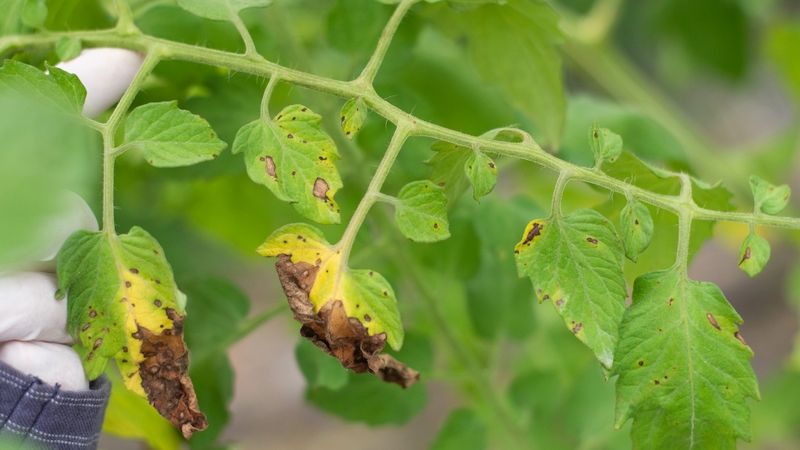Reducing Scab Resistance In Almonds
It’s almost a case of a material that’s too effective. When strobilurin fungicides were first registered in the late 1990s, growers found they had a product that could take care of that pesky disease, almond scab. With products such as azoxystrobin (Abound, Syngenta Crop Protection), trifloxystrobin (Gem, Bayer CropScience), and pyraclostrobin (Pristine, BASF), growers could clean up their orchards fairly easily. “They’re excellent against scab — inexpensive, broad-spectrum, and highly effective,” says Jim Adaskaveg, a University of California-Riverside plant pathologist. “But alternate-row spraying pushed them over the edge.”
The problem was not with the products, but that prices weren’t that great at the time, says Adaskaveg. In fact, it was because the “strobies,” as they’re commonly known, were so good, growers thought they could get away with only spraying on alternate rows. Researchers warned that the products need to be sprayed at full rates, but that’s easier said than done for a grower faced with declining crop prices. “It’s hard to do that when you have a couple of bad years,” Adaskaveg acknowledges. “They tried to get by until the price improved. It worked, but the fungicides got stressed.”
Now growers are having big problems. For example, Adaskaveg is working with almond growers in northern California who have seen the strobies fail in battling scab. The problems are most acute with growers who have used more than two applications per season, those who have made aerial applications to trees with a full canopy, and, especially, those who have employed alternate row applications.
No Skimping
Growers must keep in mind that if they skimp on fungicides, they could be headed for problems. This most often occurs with growers employing alternate row applications. Adaskaveg has found in his research on alternate row applications that the sides of the trees that don’t get the application, especially if the canopy is dense, might only get 10% of the recommended rate. For example, with a product like Gem, which has such a low recommended rate of just 3 ounces, some areas are only getting 0.3 ounces, which is far too low. “When you do this, these fungi can survive,” he says. “These aren’t the concentrations the registrant intended.”
Trees can live with low-level fungal infections, says Adaskaveg. But if they get too high, the tree will often defoliate in late spring or early summer. If that occurs, the tree will attempt to put out new leaves, so the sugars and carbohydrates will go to producing new leaves, not to the crop. That obviously leads to lower yields.
Growers need to resist the temptation to use strobies at lower than the recommended rates, says Adaskaveg. If resistance is still a problem, they will simply need to switch chemistries, even if it means paying more. “It’s a hard battle when the product you’re using costs $10 per acre and the alternative costs $25 an acre,” he says. “But sometimes you have to go with more expensive product so you can keep these tools to farm for many years.”









